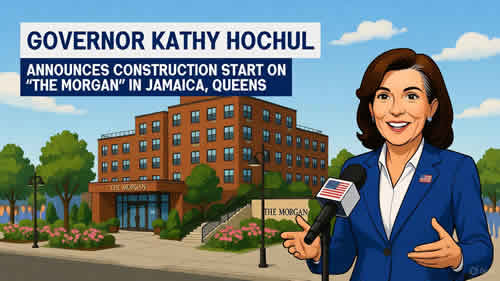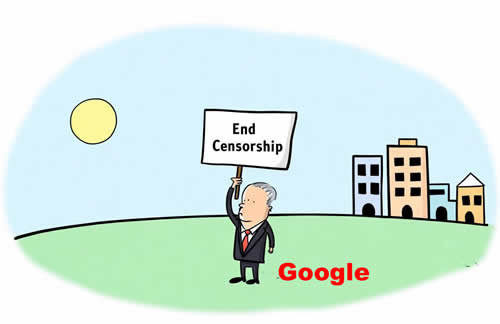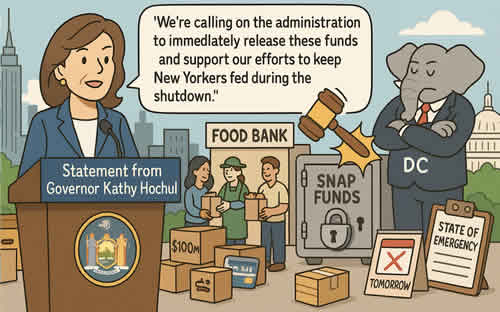On his monthly Hear From the Mayor segment on WBLS 107.5 FM, New York City Mayor Eric Adams honored fallen firefighter Patrick Brady before discussing major technology and affordability initiatives with Chief Technology Officer Matthew Fraser. They highlighted the new Emergency Alert System connecting schools directly to 911, efforts to expand broadband and provide hundreds of thousands of Chromebooks to students, digital literacy programs for seniors, and strengthened citywide cybersecurity through the Joint Security Operations Center. They also detailed cost-saving measures like discounted cell phone plans for city employees. Callers phoned in to thank Adams for his service as he reflected on his administration’s achievements—from expanding housing, internships, and financial literacy to improving public safety and digital access—while expressing gratitude and optimism as he nears the end of his term.
Gary Byrd: Well, as you know, each and every [second] Sunday of the month, WBLS has been proud to welcome the 110th mayor of New York City, second mayor of color, and the first hip-hop mayor in the city’s history, we [were] talking about him just a few minutes ago. Well it’s time to Hear from the Mayor, Mayor Eric Adams joins us this morning from 107.5 WBLS. Mr. Mayor, good morning.
Mayor Eric Adams: Hey Gary, how are you to all of the listeners? It’s great to be on this Sunday and I want to welcome you back to another episode of Hear from the Mayor. I’m your Mayor Eric Adams and really before we get started, I just want to take a moment to honor Firefighter Patrick Brady. He was responding to the scene of a fire on Kings Highway in Brooklyn last night and tragically passed away in the line of duty. Hearts go out to Patrick’s family, his wife, his brothers and uncles who are also firefighters.
The Brady family is a well-known firefighter community, and so we want to give them our deep condolences. He’s [given] his life to protect this city that we all love. And so today, we want to talk about things that I love around technology. And if this is your first time tuning in, really the show is just to hear from me and to interact in a dialogue. Listeners should give me a call and hear directly from me at (212) 545-1075.
You can also sign up to hear more from me by visiting nyc.gov/HearFromEric. Today’s guest is really, you know, one of my favorite commissioners. My brother, Matt Fraser is over at the Office of Technology. He’s the youngest and I believe the first person of color to hold that position. and what you have done has brought a level of innovation that’s unbelievable. You know, he’s my chief technology officer and we’re gonna talk about something that he introduced that really marriages public safety.
But I want to, before we get off the air, to talk about some of the other initiatives that you have brought as well, you know, as you’re rocking your God Speed hat. So, Matt, EAS, the acronym for Emergency Alert System, directly integrates New York City Public Schools with New York City 911 services and is capable of initiating 911 response in under 10 seconds. Give me the whole concept behind EAS.
Matthew Fraser, Chief Technology Officer, New York City Office of Technology and Innovation: Yeah, so when we look at what happened, not just in New York City, what we saw on Park Avenue, what we saw across the global landscape, and what we see in terms of active shooter situations. Parents that have kids that are in school, they want to know that their students, their kids’ safety is paramount. They want to make sure that we provide the fastest support possible.
And the emergency alert system gives us the capability of doing that. Now, with the system, it’s more than just being able to put in a call into 911. It’s giving those that respond the contacts necessary to know where to respond to. So imagine being a student in a school and the school has you know a couple dozen classrooms, someone comes in, and then something occurs, when a teacher hits a button it gives the capability for 911 to know that there’s an incident happening in the school.
At the same time it gives school safety– which is located in the school the ability to know that something is occurring in a specific classroom and it also gives the school administration the capability of knowing where something is happening so it gives them a better capability of who to move kids how to lock down classrooms to minimize any impact that it could have.
Mayor Adams: You know it’s unfortunate we even have to have this conversation about how to respond to active shooters but they’re real. We saw what happened at 345 Park Avenue. We see what’s playing out in schools across the country. Knock on wood we have not had a mass shooting inside our schools but it’s better to be proactive than just reactive and so if I understand you correctly when the button is hit it would identify and assist responding personnel and school personnel to move children to an area of safety.
Fraser: Exactly, exactly. So when someone approaches the school and being able to have the school safety agent or someone that’s in the school administration know where in the school the incident is occurring, not just that something’s happening but the where is very important. And minimize times to respond to things that are actually happening, and if something is moving through the school, having the capability of tracking where it’s moving to.
So I think it’s one of those things that it’s an unfortunate circumstance that it’s something that we have to look at, but it’s a reality. And it’s one of those things that we’re the first school system in the nation, the first city in the nation to adapt this type of technology, and it will blaze the trail for many others to do the same.
Mayor Adams: How many schools are we starting out with?
Fraser: So we’re getting out into eight schools at this moment, and then we’re gonna expand much further beyond that. But right now, it’s to make sure that the first phase of the rollout was to prove the concept works out, and we’re at that phase, and the next look is expanding beyond that.
Mayor Adams: And our students must not only be safe, but they have to feel safe, and this technology is a way to do it. Is it a possibility that the next administration could expand this out to city buildings because we have many cases of shootings in city buildings, post offices. I mean, there’s a whole terminology of going postal because of that. What are your thoughts on that?
Fraser: So I think that this sets the foundation at which point that the city could expand and take it further. Again, safety is the most important thing, making sure that people that enter buildings leave those buildings safely. And in the event that something happens, giving responders the capability in real time to get to the areas where it’s happening to minimize impact to human life. And I can’t stress that enough.
Mayor Adams: I want to roll, I want to go into some of the other stuff you’ve done. You know, you’re sort of behind the scenes, but people don’t realize how you changed the game [by] using technology in this city. Let’s talk about number one, the Chromebooks.
Fraser: Yeah.
Mayor Adams: Give me an overview of that.
Fraser: Yeah, so when we stepped into office in 2022 and we came in, one of the first things that we tackled in terms of challenges was cybersecurity. Beyond cybersecurity, we looked at equity and access. And I was alarmed to see that we had a significant portion of those that lived in public housing that didn’t have access to basic things like broadband.
And then what frightened me a little bit more was looking at the fact that there are many students that participate in the school system that don’t have access to devices. So in this digital age where artificial intelligence is getting wings and moving at the speed of light, having those that participate in our school system have access to the basics, connectivity and devices, is one of those things that it shouldn’t be an option, it’s a necessity and we should treat it as such.
That’s why when we launched a program to deploy Chromebooks, we got about 350,000 Chromebooks. We gave it to New York City Public Schools to distribute, but in addition to that they already had about 400,000 devices in hand. So if you look at the numbers what we’re basically doing is we’re creating the foundation so that we can have anyone that participates in the public school system have a device with a connection so that schooling of the education experience can extend beyond the classroom and they can take it home.
Mayor Adams: Excellent, and you know you touched on NYCHA. You did something else that was really innovative with high-speed broadband. Can you elaborate on that as well?
Fraser: Yeah, so when we came in in ‘22, one of the things that we saw was that over 50 percent of the people that lived in public housing didn’t have access to broadband, which was, you know, a travesty, especially considering that we came in this administration off the heels of COVID. So what I like to tell people is imagine being a kid that got sent home to a unit in public housing, you got given a device, but you had no way to use that.
Now you have a significant amount of over a two-year span, there’s learning loss, there’s social dejection, because now you don’t have a way to maintain peership with your friends, because most of the folks that went home at that time, they had Chromebooks, iPads, they were playing Roblox, and like that, that was more than just an education tool with social peership. So when we saw that, there was a program when we came in called the Internet Master Plan. It was funded for $157 million, with a total projected cost of about $2 billion.
And across a multi-year span, they were going to provide broadband to public housing. But when we came in, out of that $157 million, not a single dollar had been spent and not a single connection had been issued. So from within one year of being in office, we brought all the cable providers together, Verizon, Altice, Charter Communications. We said, you guys have access to infrastructure. We have people that need it, and they need it now.
And within one year of being in office, We launched a program, Big Apple Connect, under your leadership, and we were able to give every unit in public housing free access to broadband and basic TV. So the cool thing about that is now when someone enters public housing, they get access to those resources like they get access to running water, heat and hot water.
Mayor Adams: Yeah, because access to the internet is a service that is just as important as heat and hot water and electricity. And you know, what’s interesting is that this free access allows children to go online when you’re doing remote learning, parents doing telemedicine. I saw that too when I was borough president that far too many NYCHA residents did not have access to this. And it fit into our overall plan. Many people talk about affordability, but these are ways that are within the power of the mayor to make life more affordable.
If you’re a NYCHA resident, now we’re going to expand into Section 8 housing. That’s $159, $160 a month you are no longer paying out of your pocket. That is part of the $30 billion we put back in the pocket of working class people, such as no income tax for low-income New Yorkers, paying off college tuition for our foster care children, dropping the cost of childcare.
When you start adding up how much money we put in the pockets of people, It’s not just talking about affordability, it’s making them affordable. But you also expanded a whole program around digital literacy training for our seniors. Can you talk about that a bit?
Fraser: Yeah, so one of the things that we want to ensure is that as we continue to connect New Yorkers [that] no one got left behind. So building a set of programs so that those that were interested in increasing their skill sets using technology, could do that from the comfort of their home. So we have both programs that are available online where someone can take it at their own pace or they can go to one of our digital centers and they can pick up those programs and get skills.
And what that really does is it gives people the capability to see what’s beyond what they’re used to. When you look at today’s market space and you look at the job and employment space, technology is an underpinning or a significant part of how those sectors are underpinned. And being able to teach people how to leverage these things that they’re now being connected to is super important.
The way I like to think about it is if you look at broadband and you look at technology, you know the old proverb, you give a person a fish, they’ll eat for a day, you teach them how to fish, they’ll eat for a lifetime. Broadband is like access to water. A device is like access to a fishing pole. And skills training is like teaching them how to use that fishing pole to feed themselves. So the more that we can invest in that, not just into our seniors, but everywhere along the journey, the better that we will be as New Yorkers.
Mayor Adams: Well said and as we look towards the future on using technology to allow people to access the goods and services of the government is so important when we think about that and you know you have really just changed the game. When I came into office one of the things that Mayor de Blasio shared with me was [that] the biggest threat was cyber security. It was a real concern. When people hear about cyber security, they think it’s esoteric, “Okay, that’s nothing to do with me,” but it does. And, you know, you have really heartened many of our soft locations. Tell us what you have done around cybersecurity.
Fraser: Yeah, so for the first time in February ‘22, this is like one month since we’ve been in office, talk about moving at lightning pace. We created the Joint Security Operations Center. So for those of you that don’t know, in New York City, when we look at what we look like from a cybersecurity perspective, we see, on average, about 100 billion cyber security threats per week. And that number is 100 billion. And in order to combat that, we have a security operations center in New York City Cyber Command that runs 24/7 to monitor those types of threats to see how we respond to it.
In February of ‘22, one of the things that we did that took that to the next level is we created a partnership between [the] New York State [and] federal government in the private sector so that we could start to combat cyber security incidents as a collective versus doing it individually. So now the Joint Security Operations Center in real time has resources that are working 24/7 from the state, the federal government, and the city all working towards the same mission of keeping us safe.
Mayor Adams: And the goal is to do what? What is our end result? What would we like to accomplish?
Fraser: So our goal across the board is to minimize as many cybersecurity incidents as we can and also use the skills and the capabilities that we’ve built to reduce the amount of impacts that it has to the critical infrastructure sectors or our critical partners. If you think about what most people consider to be critical, 90 percent of it lives outside of what the government controls.
So by creating this cooperation that brings all levels of government together and brings the private sector and it makes our hospitals safer, our financial institutions better, more safe, and the things that people depend on like their grocery stores and things along that lines, it gives them the capability to partner with someone that has the resources that can help them.
Mayor Adams: You know, you don’t appreciate things until they actually break and you’re preventing that breaking from happening. Speaking of break, we got to go on a break, you know, so we’ll talk with Brother Matt Fraser, chief technology officer on the other side of the break and we look forward to continuing this conversation and again you can reach me (212) 545-1075.
Byrd: It’s Hear from the Mayor and of course more importantly, the mayor wants to hear from you, (212) 545-1075, is the number to call. Stand by, we’ll come back right after these messages from 107.5 WBLS.
[Commercial Break.]
Byrd: (212) 545-1075 is the number to call. Let’s go back to our mayor and his special guest.
Mayor Adams: Thank you, thanks so much Gary and again I’m here with our Chief Technology Officer Matt Fraser going into many of the things that we’re doing and also when we look at affordability Matt, we also did a change in cell phone payment. What was that deal that we put together? Can you go into it?
Fraser: Yeah sure, so one of the things that we could do better as a government is start using the power of government to work for the people. And one of the things that we did was we took a look at our cell phone services. Imagine if you work for a company, a private company like Pepsi, UPS, when you go in, and if they give you a corporate device, you don’t get to choose what the carrier is. You might be able to choose a device, but not the carrier.
So by consolidating all of the city’s buying power and by negotiating our telecom or mobile phone plans, we were able to get, not just save money as a government, but we were able to get an employee saver program. So now if you work for the city, do you have a program where you can get cell phone service for $10 a month, not just for you, but for you and up to four members of your household?
So imagine being a family that’s right above the poverty line or at the line, or a family that’s doing moderately better, and you’re paying $200 bucks a month for a phone, for four phones in a household, and all of a sudden that goes down to $40. Significant savings that impacts people in a real way.
Mayor Adams: Excellent, excellent. So why don’t we go to the phones. Caller, you’re on the air.
Question: Yes, good morning, Mayor Adams. I just wanna call you and thank you for all the great work that you did in providing us with jobs and opportunity to have a better life. Thank you very much.
Mayor Adams: Thank you. Thank you. It was a great pleasure being the mayor of the City of New York as we finish up this last month and 20 days. I look forward to moving the board forward. We have more work to do. We’re not done yet. And we’re going to continue to move forward. And I thank you for being a constant caller and a real vision over the city. Thank you. Caller, you’re on the air.
Question: My name is [Karen Brooke]. Mayor, as far as I’m concerned, I even voted for you this last time, but you didn’t make it. I mean, I know everybody got their thoughts, but you did a good job in a lot of things also. But sometimes we have to move on. But God’s gonna have over you like he’s gonna have all the rest of us. Everybody’s going through something, especially me for the past year.
But listen, my blessings finally came and I’m getting ready to go to church. Now I’m going to two churches. My main church is the Bronx, Catholic, but I’m going to first a [inaudible] church. I love the pastor, Black pastor that finally got her own church, because she was [inaudible]. So thank you Eric Adams, you helped out a lot. God bless you, have a beautiful day.
Mayor Adams: Thank you, God has blessed me so much. I mean, when you go from a kid from South Jamaica, Queens, struggling with a learning disability, watching mommy struggle with those three jobs, raising six children, and she raised a mayor. And you know, I am blessed every day, and there’s only been 110 of us, and I’m 110, so my picture would be up in City Hall.
So I thank you, that’s a blessing, and hope all the young people out there that feel they hit a bend in the road, it’s not the end of the road, just make a turn and keep moving and reach your destiny.
Caller, you’re on the air.
Question: Yes, I was hoping to speak to the mayor.
Mayor Adams: Yes, you are, you’re speaking to the mayor.
Question: Yes, mayor, you know, it hurt my heart that you didn’t stay in the race. Because, you know, I believe you’re one of the most prolific. And you did a real great job for the people and the City of New York. And even the last initiative that you had where you wanted to open up the job roles to those who got terminated in the COVID was such a great initiative.
I hope you stay connected to the people because if you stayed in the race, my vote was definitely going for you and I know a lot of people were disappointed that you dropped out. But kudos to the great job that you did and Almighty God continues to bless you and surround you with grace and mercy for the next leg of your journey.
Mayor Adams: So true, thank you brother. You know, it’s been 40 years, 40 committed years of doing this work, you know. And many people look at the glamor of having mayor in front of your name and they don’t realize the awesome responsibilities of taking care of 8.5 million people with 35 million opinions, you know. People will give you a thumbs up and they’ll give you the middle finger all in the same day in the same conversation. And you just have to be able to be committed to the work. And we’ve done that.
Something as simple as making sure there are benches at every bus stop, making sure that we have 11,000 internship programs for our young people, what we’re doing with financial literacy, teaching our young people how to manage their money by doing [in-school] banking, what we’re doing around universal afterschool program, making sure that we expanded the pre-K to children with special needs, breaking the record 11 times on more jobs in the city’s history, building more housing than the city’s history.
So we had one heck of a run. And so when I come to the end of the race, I’m looking for the next level of this journey. I am so excited that I can just enjoy life and just sit back and look over the real opportunities that are waiting for me. When you run the city, like New York, you can run anything and I’m ready for it. So thank you so much, great to be on the air with you and WBLS, thank you Gary and your entire crew.
Byrd: Giving thanks my brother and thank you of course for the service that you brought to our city.
November 9, 2025 New York
Sources: NYC.gov










